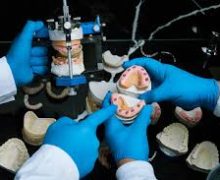
What are the main refrigeration components?
A refrigeration system is made up of several key components, each of which plays an important role in the overall function of the system. In this blog post, we’ll take a look at the main components of a typical refrigeration system and how they work together to keep things cool.
Compressor
The compressor is one of the main refrigeration components. It compresses the refrigerant, which raises its temperature. The hot gas then flows through the coils or tubes in the condenser, where it is cooled and turned back into a liquid. The cooled liquid then flows through the expansion valve or orifice tube, where it expands and evaporates. This absorbs heat from the surrounding air, and the air is then cooled by the evaporator coils or tubes. The compressor is usually powered by an electric motor, but it can also be powered by a gasoline engine.
Condenser
The condenser is one of the main refrigeration components. It is used to cool and liquefy refrigerant gas. The condenser consists of a compressor, a heat exchanger, and an expansion valve. The compressor compresses the refrigerant gas, which increases its pressure and temperature. The heat exchanger then removes the heat from the refrigerant gas, cooling it down. The expansion valve then reduces the pressure of the refrigerant gas, causing it to expand and cool further. The cooled and liquefied refrigerant gas then flows back into the evaporator, where it starts the process again.
Evaporator
The evaporator is one of the most important components in a refrigeration system. Its job is to remove heat from the air or liquid, and this process is what helps to keep food and other perishables cool. The evaporator typically consists of a coil or series of coils that are filled with a refrigerant. As the refrigerant evaporates, it absorbs heat from the surrounding air or liquid.
This process continues until the desired temperature is reached, at which point the evaporator turns off. In order to work effectively, the evaporator must be able to maintain a close temperature differential between itself and the air or liquid that it is cooling. Otherwise, the refrigerant will not be able to absorb enough heat to be effective. As such, the evaporator is a crucial component in any refrigeration system.
Metering Device
The metering device is one of the main refrigeration components. It regulates the flow of refrigerant into the evaporator and is therefore critical to the proper operation of the system. There are several different types of metering devices, each with its own advantages and disadvantages. The most common type is the capillary tube, which is simple and reliable but can be difficult to adjust.
Expansion valves are more efficient but can be delicate and require regular maintenance. Thermostatic expansion valves are the most expensive but offer the best performance. When choosing a metering device, it is important to consider the specific needs of your refrigeration system.
Conclusion
Those are the main components of a refrigeration system! As you can see, each component plays an important role in keeping things cool. When all of these components work together, they can provide effective cooling for your food storage needs. Thanks for reading!

















